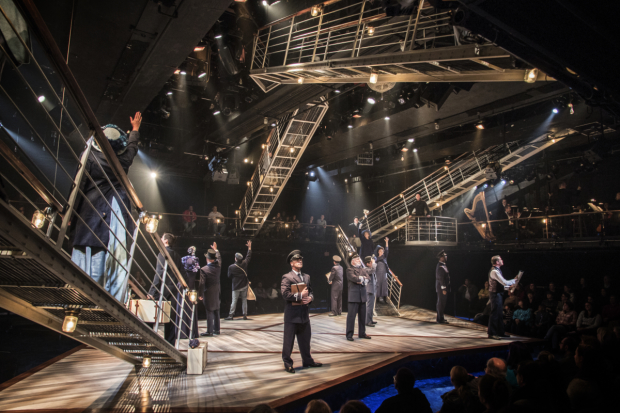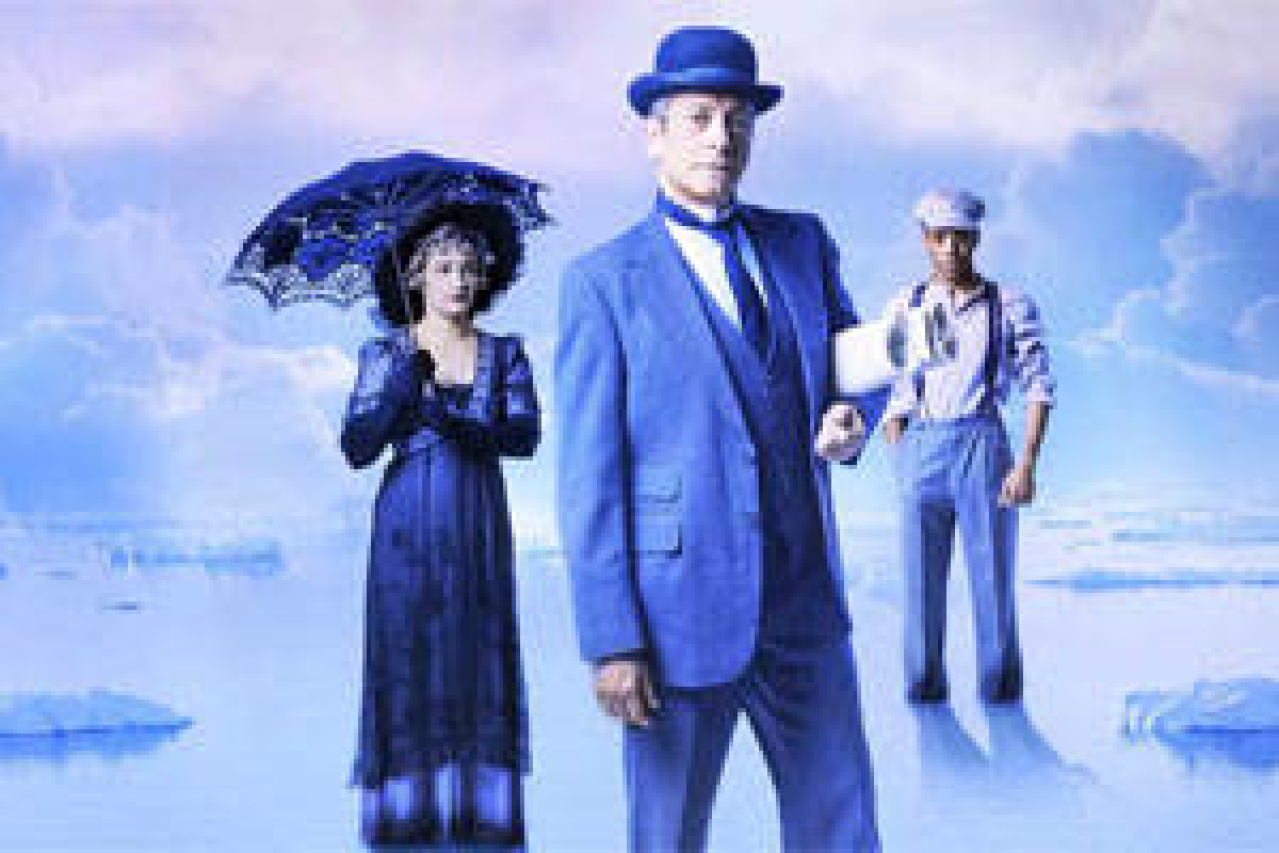Titanic

(© Paul Tate DePoo III)
Everything is epic in Signature Theatre's regional revival of Titanic, the show that won the Tony Award for Best Musical in 1997. Maury Yeston's music ranges from gentle to thrilling to patriotic. Peter Stone's story and book are riveting, often heartrending. The set, which is intended to recall the original ship, is huge and, although abstract, gives audience members a sense of the three distinct classes on the massive seagoing vessel.
From Eric Schaeffer's impeccable direction of an extremely talented 20-person cast, to James Moore's smooth direction of a 17-member orchestra, and Matthew Gardiner's brilliant choreography, this production highlights the musical's huge palette of vivid personalities and the paths of many different people — some Irish going to America, some American going home.
Titanic begins before the ocean liner even sets sail, as its architect, Thomas Andrews, assesses what the building of the vessel means in comparison to projects of other great civilizations: from the pyramids to the Parthenon. In his Prologue ("In Every Age") Thomas Andrews is the first to touch upon the fact that they have not built a mere monument out of rock, but have created something far greater: "a floating city."
Everyone associated with the ship, from the captain to the stokers, refers to the Titanic as "the ship of dreams," "the pride of mankind," and "the largest moving object in the world," revealing not only their awe, but also their pride in being associated with such a marvel. As the song "Loading Inventory" reveals, the sheer number of crystal drinking glasses and bottles of the finest champagne indicate that this will be a crossing like no other.
As the second-class and third-class passengers arrive first, the company dynamically expresses the feelings of determined men and women who will risk being strangers in an unknown land in order to find a better life for themselves and their children. In one of the finest songs in the musical ("Barrett's Song"), the stoker Frederick Barrett shovels coal and sings about his horrific past as a coal miner. For him, shoveling coal on the Titanic is already a step up.
Later, in the energetic "Lady's Maid," three women named Kate express their dreams of being a maid, a governess, and a sewing girl, just to have the privilege of working. One of the men in the company sings of wanting to be an engineer.
When the first-class passengers begin to arrive, they include some of the most notable names in American society: Mr. and Mrs. Isidor Straus; Mr. and Mrs. John Jacob Astor; Benjamin Guggenheim. This juxtaposition of classes is highlighted in a particularly interesting way through Caroline Neville, the daughter of Britain's Lord Neville, who is accustomed to traveling first-class. Her new fiancé, Charles Clarke, can't afford an expensive ticket, but because she loves him, she's willing to forgo fancy accommodations.
Bobby Smith is powerful as Andrews, proud of the ship he has built yet on the verge of madness when it starts to sink because of a design flaw. Christopher Bloch is strong as Captain E.J. Smith, a man looking forward to retirement after this voyage. Lawrence Redmond is excellent as the greedy president of the company that financed the ship's construction, the man who keeps urging the captain to go faster and faster in order to get the Titanic to New York City early and thus prove it better than its competitors.
After the collision with the iceberg, Ismay, Andrews, and Smith sing a difficult trio ("The Blame") that demonstrates the complexity of Yeston's score. Sam Ludwig is sensational as the stoker Barrett, both in his solo and in a charming duet he sings with the telegraph operator, Harold Bride. Nick Lehan is superb as Bride and their duet ("The Proposal/The Night Was Alive") is deliciously complex. Iyona Blake particularly magnificent, supple voice can easily handle all the music's difficulty.
Many more outstanding voices are well cast in important supporting roles including Stephen Gregory Smith, Tracy Lynn Olivera, John Leslie Wolfe, Matt Conner, Christopher Mueller, Erin Driscoll, and Hasani Allen.
Paul Tate dePoo III's set is a brilliant concatenation of steeply raked ramps wrapped around a relatively small, central, irregularly shaped stage. The audience is seated on all sides on three different levels. After the collision with the iceberg, chairs, tables, suitcases, even people descend from the ceiling of the theater to twirl in the invisible water.
Music director Moore and his orchestra are located on the highest balcony on one side of the theater. Amanda Zieve's lighting design makes the most of the floor-to-ceiling space, utilizing blue light under the slightly raised stage to suggest the ocean and many spotlights to pinpoint individuals as they sing. Costume designer Frank Labovitz begins with beautiful, elegantly detailed dark blue clothes for his first-class passengers. The clothes gradually grow lighter as the voyage progresses.
Although there is no way to get around the facts that some men did not put women and children first (particularly those in third-class), and that there were not enough lifeboats for all, Titanic does not leave you feeling that you have seen a remarkable tragedy. The exquisite singing, spirited dancing, the uplifting nature of Yeston's music and lyrics, coupled with the gorgeous, lush way the music is performed, make this musical feel less like a story about a disaster and more like a reverent tale about how, historically, some men and women have lived for hope.











